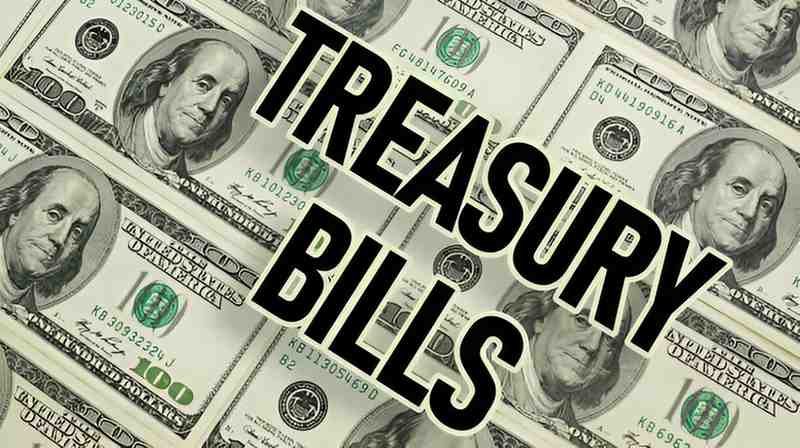As someone who has spent years navigating the intricacies of finance and accounting, I understand how intimidating the world of government securities can seem to beginners. Treasury bills, or T-bills, are one of the safest investment options available, yet many people shy away from them because the process of tendering and understanding their mechanics feels overwhelming. In this guide, I’ll break down everything you need to know about Treasury bill tenders in plain English, with practical examples, calculations, and actionable insights. By the end, you’ll feel confident enough to participate in T-bill tenders and make informed decisions.
Table of Contents
What Are Treasury Bills?
Treasury bills are short-term debt instruments issued by the U.S. government to raise funds. They have maturities of one year or less, typically offered in 4-week, 8-week, 13-week (3-month), 26-week (6-month), and 52-week (1-year) terms. Unlike bonds, T-bills don’t pay periodic interest. Instead, they are sold at a discount to their face value, and the profit you earn is the difference between the purchase price and the face value at maturity.
For example, if you buy a 13-week T-bill with a face value of \$1,000 for \$980, you’ll earn \$20 when the bill matures. This profit is known as the discount yield.
Why Invest in Treasury Bills?
T-bills are considered one of the safest investments because they are backed by the full faith and credit of the U.S. government. This makes them virtually risk-free. They are also highly liquid, meaning you can easily sell them in the secondary market if you need cash before maturity.
For beginners, T-bills are an excellent way to dip your toes into the world of investing without worrying about market volatility. They also serve as a hedge against inflation, especially when interest rates are rising.
How Treasury Bill Tenders Work
A Treasury bill tender is the process through which investors bid for T-bills. The U.S. Department of the Treasury conducts regular auctions to sell these bills. There are two types of bids you can submit:
- Competitive Bids: You specify the discount rate you’re willing to accept. If your bid is too high, you might not get the T-bill.
- Non-Competitive Bids: You agree to accept the discount rate determined by the auction. This guarantees you’ll get the T-bill, but you won’t know the exact rate until the auction ends.
As a beginner, I recommend starting with non-competitive bids. They are simpler and ensure you’ll receive the T-bill without worrying about the bidding process.
Calculating the Discount Yield
The discount yield is the return you earn on a T-bill. It’s calculated using the following formula:
\text{Discount Yield} = \frac{\text{Face Value} - \text{Purchase Price}}{\text{Face Value}} \times \frac{360}{\text{Days to Maturity}}Let’s break this down with an example. Suppose you buy a 26-week T-bill with a face value of \$1,000 for \$975. The discount yield would be:
\text{Discount Yield} = \frac{1000 - 975}{1000} \times \frac{360}{182} = 0.0495 \text{ or } 4.95\%This means your annualized return is 4.95%.
Comparing T-Bills to Other Investments
To give you a better perspective, let’s compare T-bills to other common investment options:
| Investment Type | Risk Level | Liquidity | Return Potential |
|---|---|---|---|
| Treasury Bills | Very Low | High | Low to Moderate |
| Savings Accounts | Very Low | High | Very Low |
| Corporate Bonds | Moderate | Medium | Moderate |
| Stocks | High | High | High |
As you can see, T-bills offer a unique balance of safety and liquidity, making them ideal for conservative investors or those looking to park cash temporarily.
Step-by-Step Guide to Participating in a T-Bill Tender
- Open a TreasuryDirect Account: This is the U.S. government’s online platform for buying and managing Treasury securities. It’s free to open and easy to use.
- Decide on the Type of Bid: As a beginner, stick with non-competitive bids.
- Choose the Maturity Term: Select the T-bill term that aligns with your financial goals.
- Submit Your Bid: Enter the amount you want to invest and confirm your bid.
- Wait for the Auction Results: The Treasury will announce the results, and your account will be debited for the purchase.
Tax Implications of T-Bills
One of the advantages of T-bills is that they are exempt from state and local taxes. However, you’ll still need to pay federal income tax on the interest earned. For example, if you earn \$50 from a T-bill, this amount will be subject to federal tax.
Real-Life Example
Let’s say you have \$5,000 that you want to invest for six months. You decide to buy a 26-week T-bill through a non-competitive bid. The auction results in a discount rate of 5%.
Using the formula:
\text{Purchase Price} = \text{Face Value} \times (1 - \frac{\text{Discount Rate} \times \text{Days to Maturity}}{360}) \text{Purchase Price} = 5000 \times (1 - \frac{0.05 \times 182}{360}) = \$4,873.61At maturity, you’ll receive \$5,000, earning a profit of \$126.39.
Common Mistakes to Avoid
- Ignoring the Auction Schedule: T-bill auctions are held weekly, but the schedule varies by term. Missing an auction means waiting for the next one.
- Overlooking Fees: While TreasuryDirect doesn’t charge fees, some brokers do. Always check before investing.
- Not Reinvesting: If you’re using T-bills as a long-term strategy, consider reinvesting the proceeds to compound your returns.
Advanced Strategies for T-Bill Investing
Once you’re comfortable with the basics, you can explore advanced strategies like laddering. This involves buying T-bills with different maturity dates to ensure a steady stream of income. For example, you could invest in 4-week, 13-week, and 26-week T-bills simultaneously. As each bill matures, you reinvest the proceeds into a new 26-week bill.
Final Thoughts
Mastering Treasury bill tenders doesn’t require a finance degree. With a bit of practice and the right knowledge, you can confidently participate in auctions and build a low-risk investment portfolio. Remember, the key is to start small, stay informed, and gradually expand your strategy as you gain experience.





